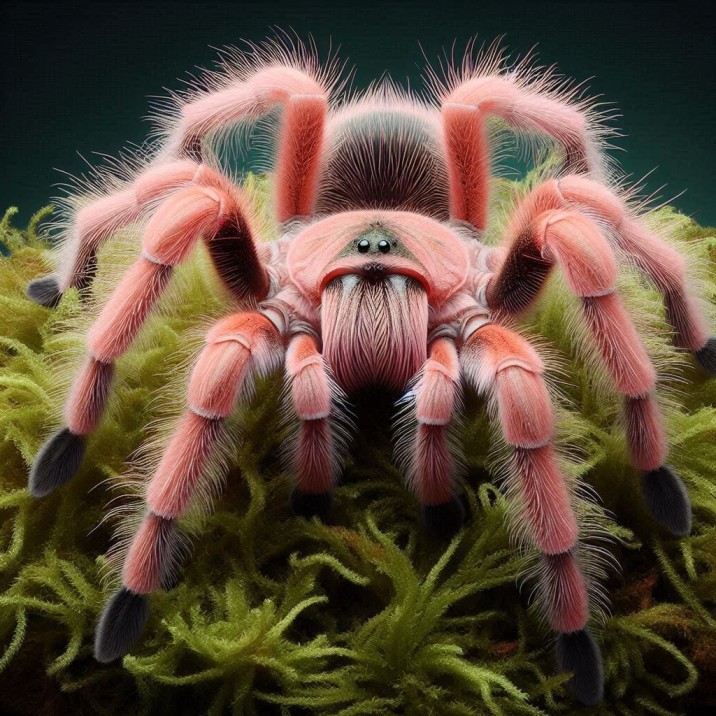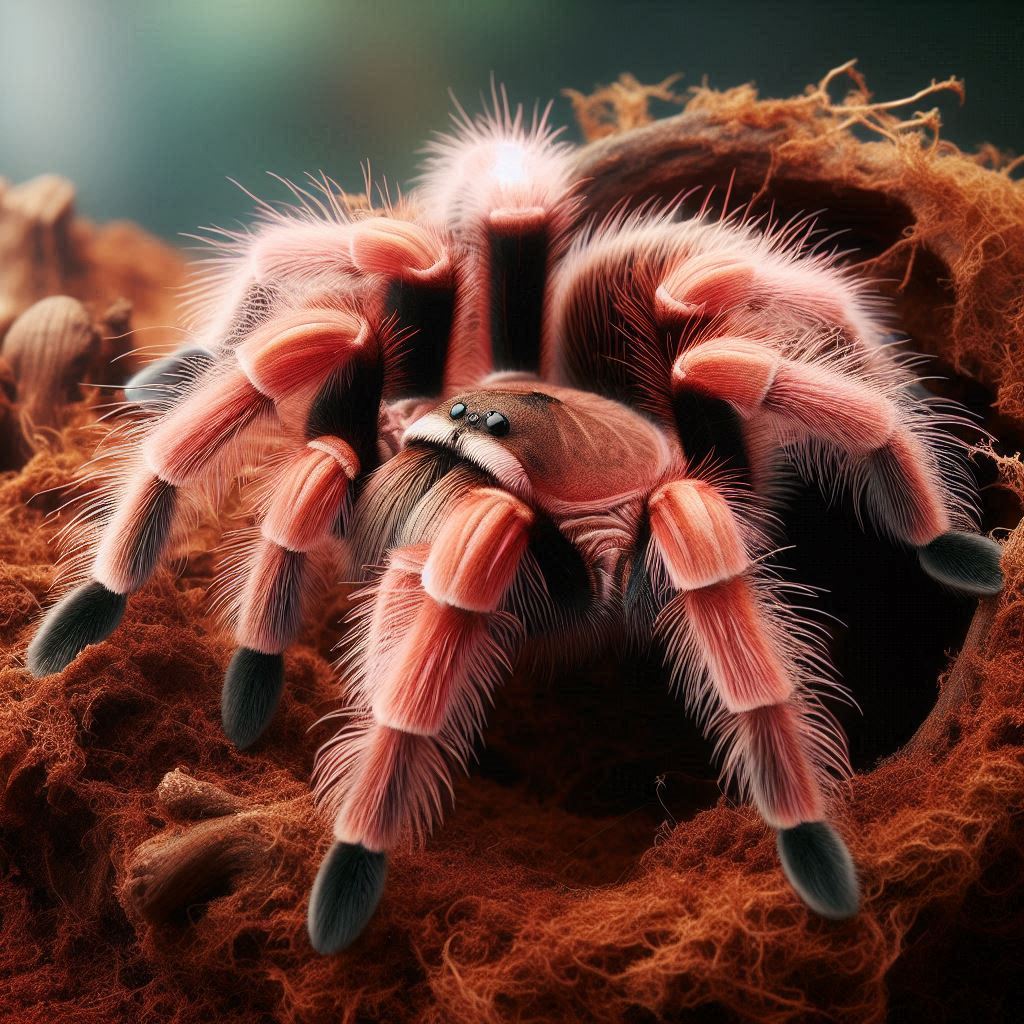Table of Contents
Table of Contents
- Introduction
- Overview of the Brazilian Salmon Pink Bird-Eating Tarantula
- What is a Brazilian Salmon Pink Bird-Eating Tarantula?
- Description and Characteristics
- Table of Information
- Appearance and Size
- Striking Coloration
- Impressive Size
- Habitat and Distribution
- Natural Habitat
- Adaptation to Captivity
- Diet and Feeding Habits
- What Do They Eat?
- Hunting Behavior
- Behavior and Temperament
- Docile Yet Defensive
- Molting Process
- Lifespan and Reproduction
- Lifespan
- Reproduction
- Keeping Brazilian Salmon Pink Bird-Eating Tarantulas as Pets
- Housing Requirements
- Feeding and Care
- Interesting Facts About Brazilian Salmon Pink Bird-Eating Tarantulas
- Conclusion
- FAQs
Introduction
The Brazilian Salmon Pink Bird-Eating Tarantula is one of the largest and most captivating spiders in the world. Known for its striking appearance and impressive size, this tarantula is a favorite among arachnid enthusiasts. Whether you’re curious about their habitat, diet, or unique characteristics, this article will provide you with all the information you need about this fascinating spider.

What is a Brazilian Salmon Pink Bird-Eating Tarantula?
The Brazilian Salmon Pink Bird-Eating Tarantula (Lasiodora parahybana) is a large, terrestrial spider native to Brazil. This tarantula is renowned for its size and salmon-pink hair that covers its body and legs, giving it a unique and eye-catching appearance.
Table of Information:
| Feature | Details |
|---|---|
| Scientific Name | Lasiodora parahybana |
| Common Name | Brazilian Salmon Pink Bird-Eating Tarantula |
| Size | Up to 10 inches (25 cm) leg span |
| Lifespan | Females: 15-20 years, Males: 5-6 years |
| Habitat | Forests in northeastern Brazil |
| Diet | Insects, small mammals, birds |
| Behavior | Docile but can be defensive if threatened |
| Conservation Status | Not endangered |
Appearance and Size
Striking Coloration
The Brazilian Salmon Pink Bird-Eating Tarantula gets its name from the distinctive salmon-pink hairs that cover its body. These hairs are not just for show; they serve as a defense mechanism, deterring predators.
Impressive Size
These tarantulas are among the largest in the world, with a leg span that can reach up to 10 inches. Despite their size, they are relatively docile and are often kept as pets.
Habitat and Distribution
Natural Habitat
The Brazilian Salmon Pink Bird-Eating Tarantula is native to the forests of northeastern Brazil. They prefer humid environments and are often found in burrows or under rocks and logs.
Adaptation to Captivity
These tarantulas adapt well to captivity, which makes them a popular choice for arachnid enthusiasts. They require a habitat that mimics their natural environment, with plenty of space to roam and hide.
Diet and Feeding Habits
What Do They Eat?
The diet of the Brazilian Salmon Pink Bird-Eating Tarantula primarily consists of insects, but they are known to eat small mammals and birds as well. In captivity, they are typically fed crickets, roaches, and occasionally small rodents.
Hunting Behavior
These tarantulas are ambush predators, meaning they wait for their prey to come close before striking. They use their powerful fangs to inject venom, immobilizing their prey quickly.
Behavior and Temperament
Docile Yet Defensive
While generally docile, the Brazilian Salmon Pink Bird-Eating Tarantula can become defensive if threatened. They may raise their legs and display their fangs as a warning.
Molting Process
Like all tarantulas, this species undergoes molting, a process where they shed their old exoskeleton to grow. This is a vulnerable time for them, and they should be left undisturbed.
Lifespan and Reproduction
Lifespan
Female Brazilian Salmon Pink Bird-Eating Tarantulas can live up to 20 years, while males have a shorter lifespan of about 5 to 6 years.
Reproduction
Mating typically occurs once the male has reached maturity. The female lays a large egg sac containing hundreds of eggs, which she guards fiercely until they hatch.
Keeping Brazilian Salmon Pink Bird-Eating Tarantulas as Pets
Housing Requirements
A spacious terrarium with a secure lid is essential. The habitat should include hiding spots and a substrate that allows for burrowing.
Feeding and Care
Regular feeding and a consistent temperature are crucial for their well-being. They also require a water dish for hydration.
Interesting Facts About Brazilian Salmon Pink Bird-Eating Tarantulas
- Largest Tarantula Species: They are one of the largest tarantula species in the world.
- Unique Defense Mechanism: They have urticating hairs that they can flick at predators.
- Popular in the Pet Trade: Due to their size and docile nature, they are popular pets.
- Nocturnal Hunters: They are most active at night when they hunt for food.
- Long Lifespan: Females can live for up to 20 years, making them long-term pets.
Conclusion
The Brazilian Salmon Pink Bird-Eating Tarantula is a remarkable creature, admired for its size, beauty, and fascinating behavior. Whether you are an arachnid enthusiast or simply curious about these incredible spiders, they offer a unique glimpse into the world of tarantulas. With proper care and attention, they can be a rewarding addition to any tarantula collection.
FAQs
1. How big can a Brazilian Salmon Pink Bird-Eating Tarantula get? They can have a leg span of up to 10 inches.
2. What does the Brazilian Salmon Pink Bird-Eating Tarantula eat? Their diet includes insects, small mammals, and occasionally birds.
3. How long do Brazilian Salmon Pink Bird-Eating Tarantulas live? Females can live up to 20 years, while males live about 5 to 6 years.
4. Are Brazilian Salmon Pink Bird-Eating Tarantulas dangerous to humans? They are generally not dangerous to humans and are more likely to flee than attack.
5. Can I keep a Brazilian Salmon Pink Bird-Eating Tarantula as a pet? Yes, they are popular pets due to their size and docile nature, but they require specific care.

